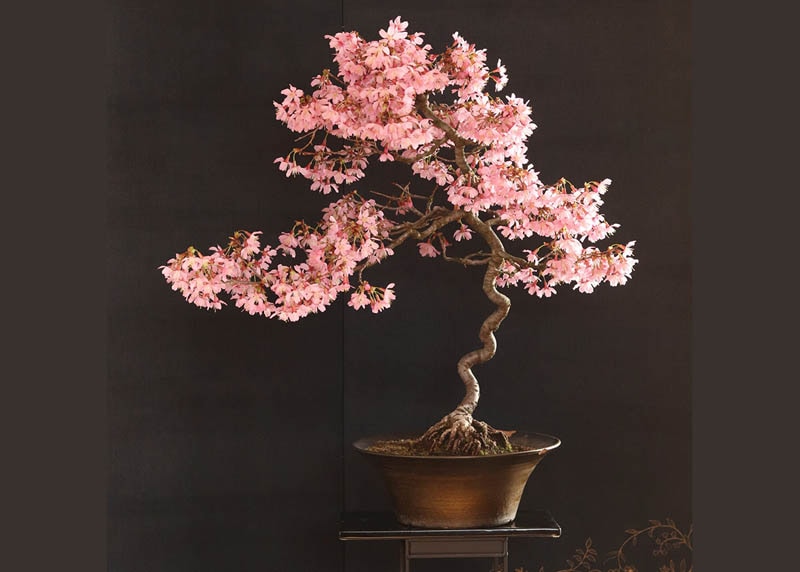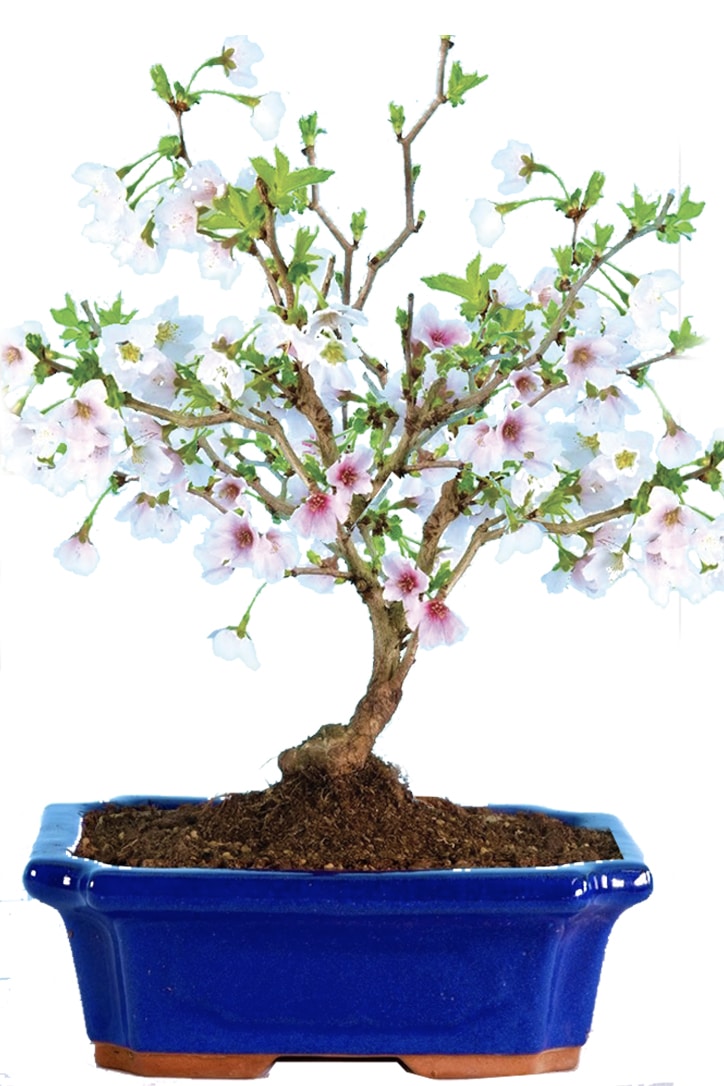Water the Japanese Flowering Cherry Bonsai tree regularly, ensuring the soil remains moist but not waterlogged. Prune the tree to maintain its shape and remove dead branches.
The Japanese Flowering Cherry Bonsai tree, known for its beautiful blossoms, requires meticulous care. Proper watering is essential to keep the soil consistently moist, avoiding both dryness and waterlogging. Regular pruning helps maintain the tree’s aesthetic shape and encourages healthy growth.
Position the bonsai in a location with ample sunlight for optimal health. Use a well-draining soil mix to prevent root rot. Fertilize during the growing season to provide necessary nutrients. Repotting every couple of years ensures the roots have enough space and fresh soil. This care routine ensures your bonsai thrives and remains a stunning centerpiece.
Introduction To Japanese Flowering Cherry Bonsai
Caring for a Japanese Flowering Cherry Bonsai involves proper watering, pruning, and sunlight. Regular maintenance ensures vibrant blooms and healthy growth.
Historical Background
The Japanese Flowering Cherry Bonsai has a rich history. It originated in Japan centuries ago. Samurai warriors admired its beauty. The tree symbolizes strength and beauty. People from all over the world love this tree.
Unique Characteristics
This bonsai tree blooms with stunning pink flowers. The flowers have a sweet fragrance. The tree’s bark is smooth and brown. Leaves turn bright colors in autumn. It thrives in various climates. Its branches create elegant shapes. Proper care enhances its beauty.
Choosing The Right Bonsai
Caring for a Japanese Flowering Cherry Bonsai involves proper sunlight, regular watering, and timely pruning. This bonsai thrives with balanced fertilization and well-draining soil.
Selecting Healthy Trees
Pick trees with bright green leaves. Avoid trees with yellow or brown leaves. Check the roots. Healthy roots are firm and white. The trunk should be smooth and free from scars. Look for branches that are evenly spaced. This helps the tree grow well.
Varieties To Consider
Different varieties offer different features. Some popular types are Yoshino and Kwanzan. Yoshino trees have white blossoms. Kwanzan trees have pink flowers. Both are beautiful and easy to care for. Choose a variety that suits your taste.
Ideal Growing Conditions
Japanese Flowering Cherry Bonsai trees thrive in bright, indirect sunlight and well-draining soil. Ensure consistent watering to keep the soil moist but not waterlogged.
Light Requirements
Japanese Flowering Cherry Bonsai trees need bright, indirect light. A south-facing window is best. Avoid direct sunlight to prevent leaf burn. Use grow lights if natural light is insufficient.
Temperature And Humidity
Ideal temperature range is 60-75°F. Keep the bonsai away from drafts and sudden temperature changes. High humidity is crucial. Use a humidity tray or mist the tree daily. Dry air can harm the tree.
:max_bytes(150000):strip_icc()/GettyImages-183808549-7d7af6c390914ff2838afda533f582ac.jpg)
Credit: www.thespruce.com
Watering Techniques
Water the bonsai tree once a day. Morning is the best time for watering. Use a watering can with a fine spout. This helps to avoid disturbing the soil. Ensure the water flows through the drainage holes.
Overwatering can harm the tree. Check the soil before watering. It should feel slightly dry to the touch. Do not let the bonsai sit in water. Use a well-draining soil mix to help prevent waterlogging.
Soil And Fertilization
Proper soil and fertilization are essential for Japanese Flowering Cherry Bonsai tree care. Use well-draining soil and apply balanced fertilizer to promote healthy growth.
Best Soil Mixes
The best soil mix for a Japanese Flowering Cherry bonsai is well-draining. A mix of akadama, pumice, and lava rock is ideal. This mix keeps roots healthy and strong. Ensure the soil stays moist but never soggy. Overwatering can cause root rot.
Nutrient Needs
Japanese Flowering Cherry bonsai trees need regular feeding. Use a balanced fertilizer for best results. Feed the tree once a month during the growing season. In winter, reduce feeding to once every two months. Avoid over-fertilizing as it can harm the tree.

Credit: www.bonsaiempire.com
Pruning And Shaping
Pruning is key to maintaining a healthy bonsai tree. Always use sharp, clean tools. Cut branches that are dead or weak. Trim away any crossing branches. Keep the tree’s shape balanced. Ensure good air and light flow within the tree. Regular pruning helps the tree grow strong and beautiful.
Shaping the bonsai tree requires patience. Use wire to guide branch growth. Wrap the wire gently around branches. Bend them slowly to the desired shape. Check the wire regularly. Make sure it does not cut into the bark. Trim leaves and small branches to refine the shape. Practice will improve your shaping skills.
Pest And Disease Management
Japanese Flowering Cherry Bonsai trees can attract pests. Aphids, scale insects, and spider mites are the most common. Inspect your tree regularly. Use insecticidal soap to treat infestations. Neem oil can also help. Remove any pests by hand if possible. Keep your tree healthy to avoid pests.
Preventing disease is key for your bonsai’s health. Fungal infections are common. Avoid overwatering to prevent root rot. Ensure good air circulation around the tree. Use a well-draining soil mix. Remove any dead or fallen leaves promptly. Clean your tools before pruning. This stops the spread of disease.
Seasonal Care Tips
Japanese Flowering Cherry Bonsai trees require seasonal care to thrive. Ensure adequate sunlight, proper watering, and timely pruning for optimal growth. Protect from frost during colder months to maintain their delicate beauty.
Spring And Summer Care
Water your bonsai tree regularly during spring and summer. Ensure the soil remains moist but not soggy. Place the tree in a location with plenty of sunlight. Fertilize the tree every two weeks with a balanced fertilizer. Prune new shoots to maintain the tree’s shape. Check for pests and treat them immediately. Repot the tree if it outgrows its container.
Fall And Winter Maintenance
Reduce watering in fall and winter. Allow the soil to dry slightly between waterings. Move the bonsai to a cooler, indoor location during winter. Provide indirect sunlight to the tree. Stop fertilizing during these months. Inspect for any dead leaves and remove them. Protect the tree from frost and cold drafts.
Repotting And Root Care
Repotting is needed every two years. Spring is the best time to repot. The tree is more active then. New soil helps with growth.
Root pruning is crucial for bonsai health. Trim one-third of the roots. Use clean, sharp tools. Cut away any rotting or dead roots. Short roots are better for the tree. This helps it stay small and healthy.

Credit: www.bonsaidirect.co.uk
Conclusion And Final Tips
Overwatering can harm your bonsai. Always check soil moisture first. Too much sunlight can burn leaves. Provide shade during hot afternoons. Pruning too much can weaken the tree. Trim carefully and avoid cutting too many branches. Using the wrong soil mix can cause poor growth. Use a mix designed for bonsai.
Regularly check for pests and diseases. Early detection helps in quick treatment. Fertilize your bonsai during the growing season. Use a balanced fertilizer for best results. Always use clean tools for pruning. Dirty tools can spread diseases. Repot the tree every two years. This helps in healthy root growth.
Conclusion
Caring for a Japanese Flowering Cherry Bonsai Tree can be rewarding. Follow the care tips for best results. Ensure proper watering, sunlight, and pruning. Your bonsai will thrive and beautify your space. Enjoy the timeless elegance of this miniature tree.
Happy gardening!

